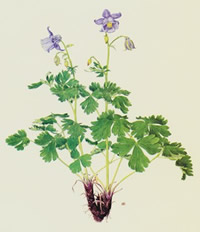
The International Union for Conservation of Nature (IUCN) Red List of Threatened Species, also known as the IUCN Red List or Red Data Book, founded in 1964, is an inventory of the global conservation status and extinction risk of biological species. A series of Regional Red Lists, which assess the risk of extinction to species within a political management unit, are also produced by countries and organizations.

The macaques constitute a genus (Macaca) of gregarious Old World monkeys of the subfamily Cercopithecinae. The 23 species of macaques inhabit ranges throughout Asia, North Africa, and Europe. Macaques are principally frugivorous, although their diet also includes seeds, leaves, flowers, and tree bark. Some species such as the long-tailed macaque will supplement their diets with small amounts of meat from shellfish, insects, and small mammals. On average, a southern pig-tailed macaque in Malaysia eats about 70 large rats each year. All macaque social groups are arranged around dominant matriarchs.

Valeriana is a genus of flowering plants in the family Caprifoliaceae, members of which may by commonly known as valerians. It contains many species, including the garden valerian, Valeriana officinalis. Species are native to all continents except Antarctica, with centers of diversity in Eurasia and South America.

The conservation status of a group of organisms indicates whether the group still exists and how likely the group is to become extinct in the near future. Many factors are taken into account when assessing conservation status: not simply the number of individuals remaining, but the overall increase or decrease in the population over time, breeding success rates, and known threats. Various systems of conservation status are in use at international, multi-country, national and local levels, as well as for consumer use such as sustainable seafood advisory lists and certification. The two international systems are by the International Union for Conservation of Nature (IUCN) and The Convention on International Trade in Endangered Species of Wild Fauna and Flora (CITES).

An IUCN Red List Critically Endangered species is one that has been categorized by the International Union for Conservation of Nature as facing an extremely high risk of extinction in the wild. As of December 2023, of the 157,190 species currently on the IUCN Red List, 9,760 of those are listed as Critically Endangered, with 1,302 being possibly extinct and 67 possibly extinct in the wild.

Hypericum socotranum is a species of flowering plant in the Hypericaceae family which is endemic to the island of Socotra in Yemen. Its natural habitats are subtropical or tropical dry forests and rocky areas.

Aquilegia nuragica, commonly called Nuragica columbine, is a perennial species of plant in the family Ranunculaceae. It is endemic to Italy, on the island of Sardinia.
Arenaria grandiflora subsp. bolosii is a species of plant in the family Caryophyllaceae. It is endemic to Spain. Its natural habitat is Mediterranean-type shrubby vegetation. It is threatened by habitat loss.

Valeriana trinervis is a species of plant in the family Caprifoliaceae. It is endemic to Corsica, France where there is a single sub-population near Bonifacio of which the only 140 of the individual plants remain. The common name of the plant is Centranthe À Trois Nervures in French. Its natural habitat is Mediterranean-type shrubby vegetation. It is currently threatened by habitat loss.
Valeriana alypifolia is a species of plant in the family Caprifoliaceae. It is endemic to Ecuador. Its natural habitat is subtropical or tropical high-altitude grassland.
Valeriana aretioides is a species of plant in the family Valerianaceae. It is endemic to Ecuador. Its natural habitat is subtropical or tropical high-altitude grassland.
Valeriana asterothrix is a species of plant in the family Caprifoliaceae. It is endemic to Ecuador. Its natural habitats are subtropical or tropical moist montane forests and subtropical or tropical high-altitude shrubland.
Valeriana buxifolia is a species of plant in the family Caprifoliaceae. It is endemic to Ecuador. Its natural habitats are subtropical or tropical high-altitude shrubland and subtropical or tropical high-altitude grassland.
Valeriana cernua is a species of plant in the family Caprifoliaceae. It is endemic to Ecuador. Its natural habitat is subtropical or tropical high-altitude grassland.
Valeriana coleophylla is a species of plant in the family Caprifoliaceae. It is endemic to Ecuador. Its natural habitats are subtropical or tropical moist montane forests and subtropical or tropical high-altitude shrubland.
Valeriana secunda is a species of plant in the family Caprifoliaceae. It is endemic to Ecuador. Its natural habitat is subtropical or tropical high-altitude grassland.
Zamia amazonum is a species of plant in the family Zamiaceae. It is found in Belize, Colombia, Peru, and Venezuela. It is threatened by habitat loss.

The Santarém parakeet, also known as Hellmayr's parakeet or in aviculture as Hellmayr's conure or the Santarém conure, is a species of parrot in the family Psittacidae. It is found in the eastern and central sections of the Amazon basin south of the Amazon River, only just extending onto the northern bank of this river.

Bonaparte's parakeet, also known as Deville's parakeet, or in aviculture as Deville's conure, is a species of parrot in the family Psittacidae. It is restricted to the Brazilian state of Amazonas south of the Solimões river.

A vulnerable species is a species which has been categorized by the International Union for Conservation of Nature as being threatened with extinction unless the circumstances that are threatening its survival and reproduction improve.










